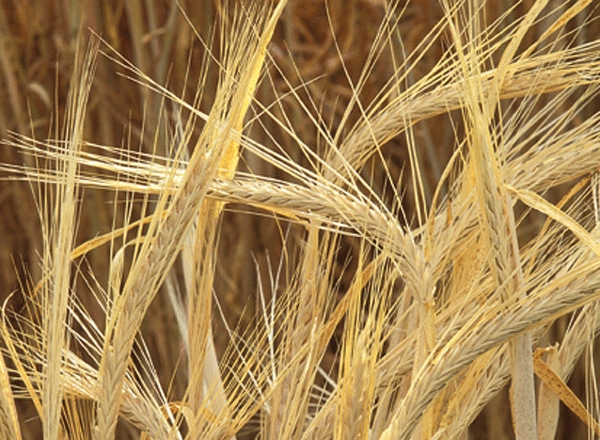September 16, 2010

A shortage of wheat seed, especially of preferred varieties, will force some grain growers in the upper Southeast to look for alternative crops to plant this fall.
Oats, barley, even canola are all viable options, if marketing outlets are available. Of the options available, for farmers in the upper half of northeast North Carolina, most of Virginia and the Eastern Shore, barley may be the best option for at least five reasons.
1) Market availability: Osage Bio’s new ethanol plant in Hopewell, Va. has just come on line and is in need of contracting all the local barley they can get. The company recently upped the price they are paying for barley to 80 percent of the selling price of corn.
The Hopewell plant uses primarily barley as stock for making ethanol and high quality barley meal, used in a number of livestock feeding diets. Most of the barley for the plant comes from the Midwest, but some may come from as far away as Canada.
New barley varieties are available for growers in the upper Southeast and seed is available. At the end of the growing season, barley can provide some much needed cash for spring and summer 2011 crops.
2)Seed availability. When El Nino rains began in the upper Southeast last October, wheat acreage looked to be stable, maybe even up a few acres. Continued rainfall prevented many farmers, including many seed growers, from planting a crop.
For the wheat that was planted, and in some cases replanted, weather went from wet to worse. One of the coldest winters, with record snowfall to boot, hit the area, further damaging wheat that made it through the fall rains.
Wheat in general, and high quality wheat seed in particular, were hammered by the unusual weather pattern, which included hot, dry weather late in the season and on up to harvest.
The end result has been a general lack of wheat seed. Some mid- and late-maturing varieties were decimated by the weather, creating a dire shortage of seed in these varieties.
Seed supply plentiful
Barley faired much better with the weather and seed supplies seem to be plentiful. A steady increase in acreage in Virginia has produced a continuing good supply of barley seed, plus seed is available from other parts of the country, which has not been the case with most wheat varieties.
3)Weather conditions: El Nino came in wet and cold and La Nina went out hot and dry. The aftermath that began in September is seasonable temperatures with ample, but not flooding, rains. That outlook extends from September until the end of the years.
North Carolina State University agronomist and regional weather guru Ron Heiniger says weather conditions should be ideal for wheat or barley planting. Even better, Heiniger says the window for planting fall crops should extend from mid-September to December, giving farmers ample time to work barley into harvest schedules for other crops.
The summer drought and heat that devastated crops in the upper Southeast also makes for a better situation for barley. In many, if not most, cases cotton, peanuts and soybeans were harvested earlier than usual because of the weather conditions. The early harvest leaves ample time for growers to plant fall grain crops.
4)Residual nitrogen: Corn is a high nitrogen crop. Corn planting in the upper Southeast was up slightly last spring. Heat and drought in the critical growth period of corn devastated crop production, forcing many growers to harvest a small percentage of their expected yield — and to do it early in the season, or in some cases, simply abandon much of their corn acreage.
The end result of weather-related damage to corn has been to leave an ample supply of nitrogen in the soil.The nitrogen requirements for barley are similar to wheat, but in some cases not as demanding. Having residual nitrogen in the soil for fall plantings is a big bonus, regardless of which grain crop the grower is planting.
5)The soybean market is good. El Nino didn’t restrict its impact on grain crops to the Southeastern U.S., crops in other parts of the world were as damaged, in some cases more so, helping to tighten soybean stocks.
Good prices for soybeans are projected for 2011, and there is little reason to doubt soybean acreage in the Southeast will be up next year.
Soybeans and barley are great bedfellows. Tests at Virginia Tech’s Tidewater Agricultural Research and Extension Center indicate a 5-8 bushel advantage for soybeans planted behind barley versus those planted behind wheat.
Hannover, Va., grower Kevin Engel, who grows several thousand acres of barley and wheat, says his best yielding soybeans always come behind barley. The yield advantage is most commonly attributed to harvesting barley 10 days or so earlier than wheat and getting soybeans in the ground earlier behind barley.
For farmers with no wheat seed, barley seems like a ‘no-brainer’. However, for those who do have wheat seed, selling the seed and planting some of the acreage in barley may still be a good economic option.
[email protected]
About the Author(s)
You May Also Like






